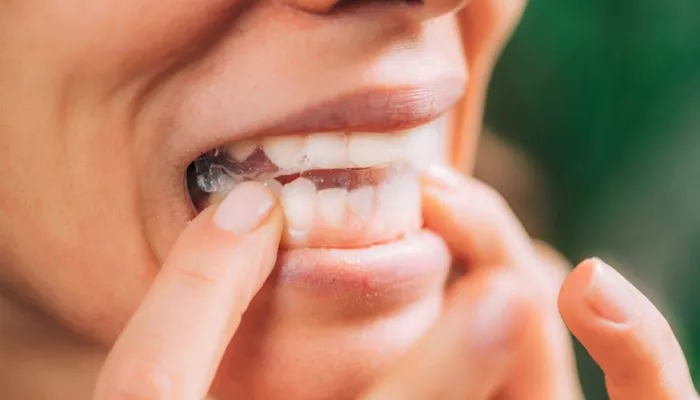Teeth whitening strips are a popular and convenient option for achieving a brighter smile. Many people use these strips to enhance their appearance before special occasions, job interviews, or simply for personal satisfaction. However, one common question arises: how long should you wait before eating normally after using teeth whitening strips? In this article, we will explore the factors affecting this timeline, provide guidelines for post-whitening care, and discuss the best practices for maintaining your newly whitened smile.
Understanding Teeth Whitening Strips
Teeth whitening strips contain a bleaching agent, typically hydrogen peroxide or carbamide peroxide. These agents work by penetrating the enamel and breaking down stains and discoloration. The strips are designed to adhere to the teeth and deliver the whitening agent over a specified period, usually ranging from 30 minutes to an hour.
While whitening strips can effectively lighten the color of your teeth, they can also temporarily increase tooth sensitivity and affect the enamel’s surface. This is why it’s essential to follow the recommended guidelines regarding eating and drinking after using the strips.
Why Timing Matters
After using teeth whitening strips, it is crucial to wait before eating or drinking for several reasons:
Tooth Sensitivity: Many people experience increased tooth sensitivity after using whitening strips. This sensitivity can make eating uncomfortable, especially when consuming hot, cold, or sweet foods.
Enamel Absorption: After whitening, the enamel may be more porous and susceptible to staining. Eating or drinking immediately after use can introduce pigments and stains that may counteract the whitening effects.
Effectiveness of the Treatment: Allowing time between using the strips and eating helps ensure that the whitening agent has had enough time to work effectively on the teeth.
How Long After Teeth Whitening Strips Can I Eat Normally
General Guidelines
Most dental professionals recommend waiting at least 30 minutes to 1 hour after removing whitening strips before eating or drinking. This timeframe allows the whitening agent to penetrate the enamel effectively and reduces the risk of sensitivity and staining.
SEE ALSO: How Long Should You Use A Teeth Whitening Light
Factors Influencing The Waiting Period
While 30 minutes to 1 hour is a general guideline, several factors can influence how long you should wait:
Type of Whitening Strips: Different brands and types of whitening strips may have varying concentrations of bleaching agents. Always refer to the specific instructions provided with your product. Some strips may recommend longer waiting periods.
Individual Sensitivity: If you have a history of tooth sensitivity, you may want to wait longer before eating. Listen to your body and give your teeth the time they need to recover.
Dietary Choices: Certain foods and beverages can stain teeth more than others. If you plan to consume highly pigmented foods or drinks, such as red wine, coffee, or berries, consider waiting longer to ensure the whitening effects are preserved.
Best Practices After Using Whitening Strips
To maximize the benefits of your whitening treatment and minimize potential side effects, consider the following best practices:
1. Rinse Your Mouth
After removing the whitening strips, rinse your mouth thoroughly with water. This helps remove any residual whitening gel and reduces the risk of sensitivity. Avoid using mouthwash with alcohol, as it can further irritate sensitive teeth.
2. Choose Soft Foods
When you do resume eating, opt for soft foods that are easy to chew and less likely to irritate sensitive teeth. Examples include:
- Yogurt
- Mashed potatoes
- Applesauce
- Smoothies
- Scrambled eggs
3. Avoid Staining Foods and Drinks
For at least 24 hours after using whitening strips, try to avoid foods and beverages that can stain your teeth. These include:
- Coffee and tea
- Red wine
- Dark sodas
- Berries
- Tomato sauce
- Soy sauce
4. Maintain Good Oral Hygiene
Continue to practice good oral hygiene after whitening. Brush your teeth gently with a soft-bristled toothbrush and fluoride toothpaste.
Floss daily to remove any food particles that may get stuck between your teeth.
5. Stay Hydrated
Drink plenty of water after using whitening strips. Staying hydrated helps maintain saliva production, which is essential for oral health.
Saliva helps neutralize acids and wash away food particles, reducing the risk of stains.
Managing Tooth Sensitivity
If you experience tooth sensitivity after using whitening strips, here are some tips to help alleviate discomfort:
Use Desensitizing Toothpaste: Consider using a toothpaste designed for sensitive teeth. These products contain ingredients that help block pain signals from the tooth surface.
Avoid Extreme Temperatures: Steer clear of very hot or cold foods and beverages until your sensitivity subsides. Stick to room temperature options to minimize discomfort.
Limit Acidic Foods: Foods that are highly acidic, such as citrus fruits and vinegar, can exacerbate sensitivity. Avoid these until your teeth feel more comfortable.
Consult Your Dentist: If sensitivity persists or worsens, consult your dentist. They may recommend professional treatments or alternative whitening options that are less likely to cause sensitivity.
Conclusion
Using teeth whitening strips can be an effective way to achieve a brighter smile. However, it is essential to wait at least 30 minutes to 1 hour before eating normally to maximize the effectiveness of the treatment and minimize sensitivity. By following best practices and maintaining good oral hygiene, you can enjoy the benefits of your whiter teeth while reducing the risk of discomfort and staining.

